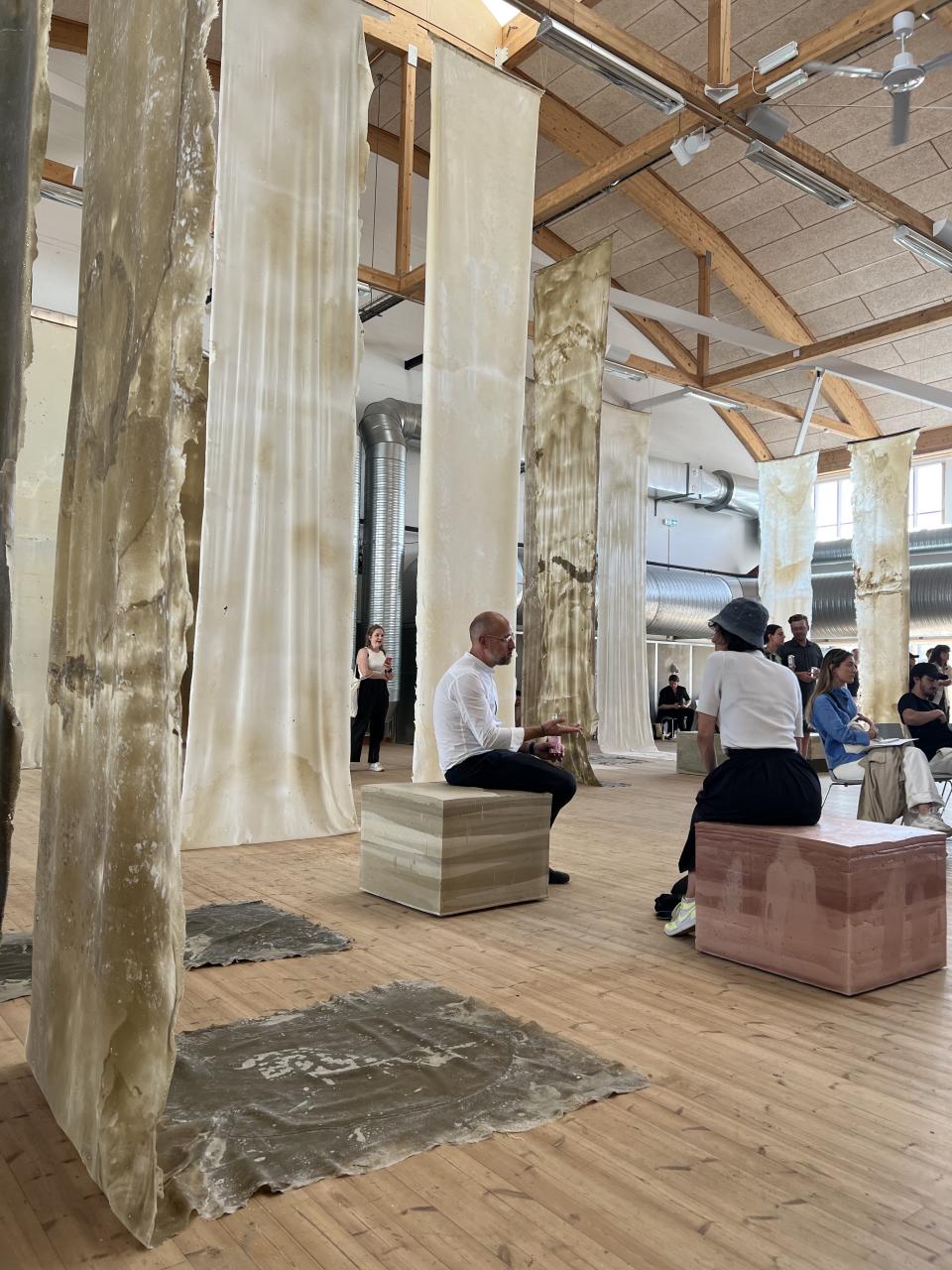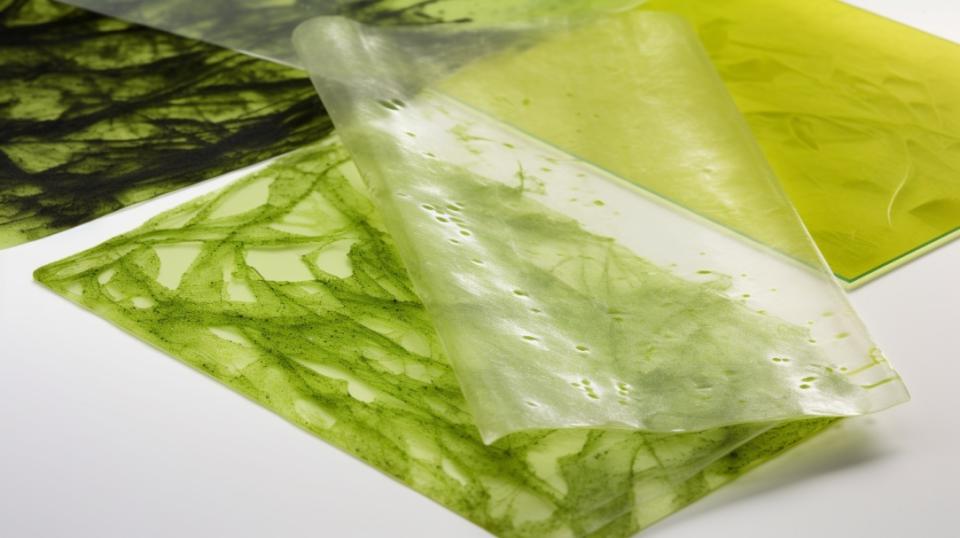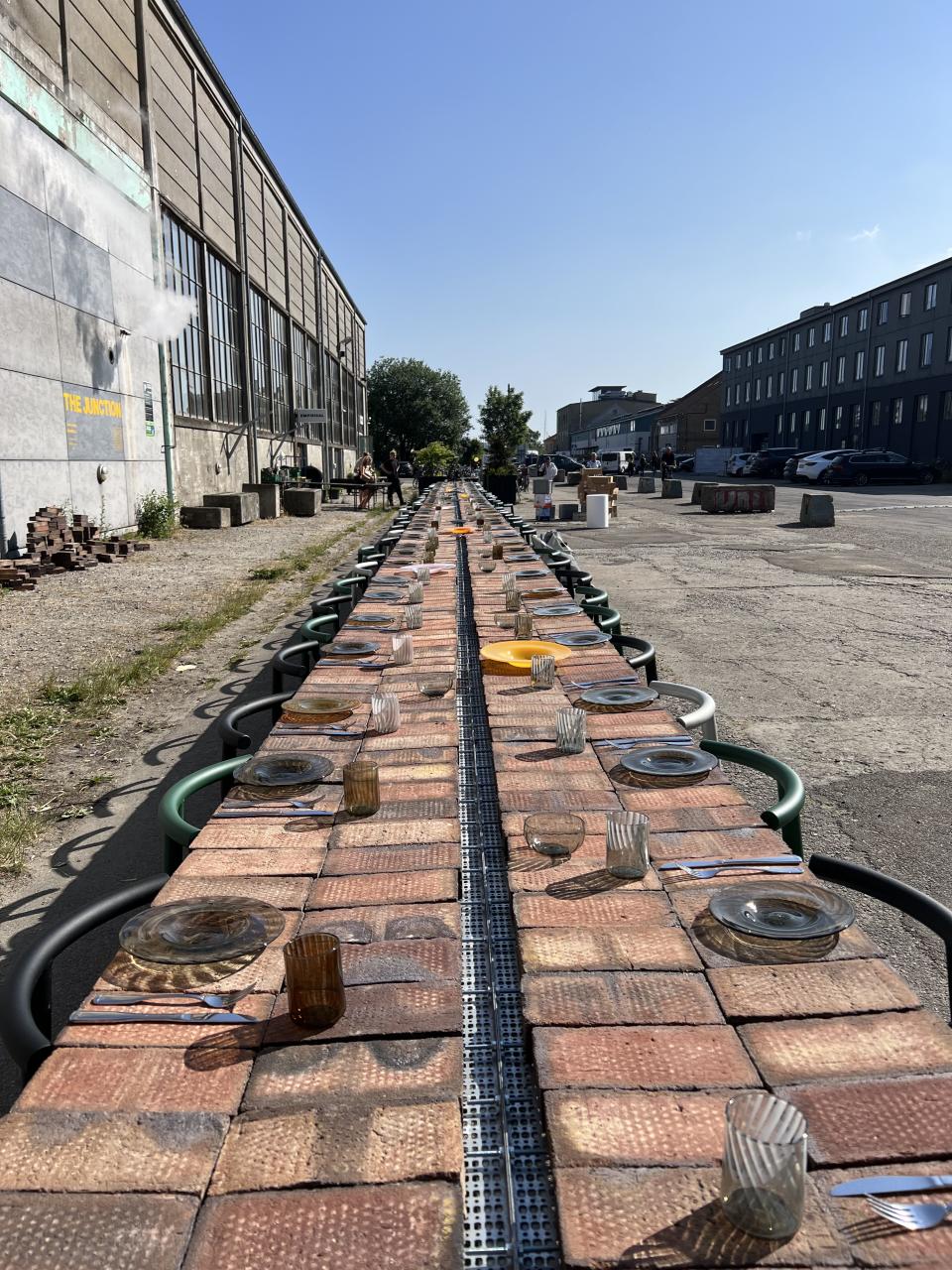Bio Solutions for Home Emerge in Copenhagen

COPENHAGEN — In a Refshaleøen industrial space draped in swathes of biomaterial and bio-foam stools that look like bricks but are surprisingly comfortable, realistic sustainable solutions for the architecture, furniture and interiors sectors came to the fore. Space10 and 3daysofdesign in collaboration with Material Matters and architecture studio Office Kim Lenschow presented “Materials of Tomorrow,” which unfolded during the 10th edition of 3daysofdesign Copehangen. The three-day festival, which closes Friday, hosted a roster of events from about 300 local and international brands, spanning 13 design districts.
Similar to the fashion industry, bridging the gap between the worlds of design and the coveted solutions emerging from science’s laboratories is an enduring challenge.
More from WWD
The monumental 650 installations and showcase also featured a symposium that brought together innovative pioneers in the material field to deliver keynotes as well as lively panel conversations. Lenschow presented a home crafted without concrete and research project “The Throne of Fragility” made with biodegradable plastic, underscoring the permanence of design objects. “Concrete materials have an afterlife and fragility. This needs a proper discussion before it can be implemented anywhere,” he told the crowd, explaining that rendering these projects marketable is crucial for the future. “As an architect, I need to make it so that people want and something banks can invest into.”

Sector-wide, the home and interiors industry has faced criticism as the ongoing environmental crisis unravels. A recent report by the U.S. Environmental Protection Agency on durable goods found that furnishings waste destined for landfills has risen nearly 400 percent compared to 1960.
In recent years, there has been a significant rise in consumer sustainability concerns within the realm of homeware and design, according to a recent “Sustainable Homeware” report compiled by data research and insights company Launchmetrics. “As people become more aware of the environmental and social impacts of their purchasing choices, they are seeking sustainable alternatives for furnishing and decorating their homes,” Launchmetrics said, noting that social media is a key driver. In fact, since 2022, mentions around Sustainable Homeware generated more than $20.2 million in media impact value, growing by an average of 6 percent month-on-month.
At the Space10 event, designer Bonnie Hvillum of Natural Material Studio discussed her latest design creations incorporating soft textiles made from bio-polymers, clay and chalk, and a bio-based foam composite, that is local, circular, biodegradable and natural. Hvillum envisaged the swathes made from her Procel, created from natural polymers, as well as the bio-foam stools.
“I feel like when it comes to crafting materials and the crafting techniques, I receive a lot of comments on how we can scale things up. I am like ‘yeah, but how do we define that?’ I just did a huge project with Calvin Klein [producing gift pouches] where we produced 150 square meters of bio-fabric in less than a month. So what is commercial here… I feel like those lines are starting to blur.”


Also at the symposium was Phil Ayres from the CITA mycelium lab who is known for pioneering the use of bricks made by packing agricultural waste and mycelium, the fungus that makes mushrooms, into a mould and letting them grow into a solid mass.
Ayres, who is based at the Centre for Information Technology and Architecture in Copenhagen, is also a core member of the Fungar project — which explores what kinds of new buildings society might construct out of mushrooms. “It’s difficult to bring the industry around to this. Essentially they are indigenous craft and technologies. I see it as a potential for disruption.”
“Mushrooms might sound like an outlandish building material. But there is certainly good reason to drastically rethink construction. Buildings and construction are responsible for 39 percent of anthropogenic carbon dioxide emissions — and a whopping 21 percent of those emissions come just from the making of steel and concrete. Construction also uses vast amounts of natural resources,” according to a report published by Horizon, the European Commission Research and Innovation Magazine in 2021.
Another project, Fungateria, focuses on bringing mycelium-based materials into an Engineered Living Material (ELM) context. ELMs comprise living cells that remain biologically active in use-cases, thereby offering radically new and tailored functionalities over non-living materials, for example: self-regeneration.

Design, craft and architecture writer Grant Gibson recalled Zanotta making a hemp chair more than a decade ago. “It’s important … seeing these materials being more accepted and used more. I mean obviously there’s a lot of people talking about net plastic and fishing; I think it is important to point out that traditionally bio materials have been used in furniture making all this time and they’ve been part of the craft heritage.” Gibson’s work has been published in The Observer, New Statesman, The Guardian, Daily Telegraph, and House & Garden and in 2019, he launched a podcast series called “Material Matters with Grant Gibson.”
Nearby, at the city’s Junction venue, Copenhagen-based design and architecture studio Spacon & X and 3daysofdesign unveiled an ultra-long table assembled from repurposed materials, envisaged as a unifying centerpiece for the entire event, effectively revitalizing an underutilized area.

“What drives design these years are sustainability and how to secure the design sector in a future where we must reduce our carbon footprint significantly. On the one hand, we must consume less, which threatens the design sector. But, on the other hand, clever design will save us in the end,” said 3daysofdesign managing director Signe Byrdal Terenziani.
Best of WWD

